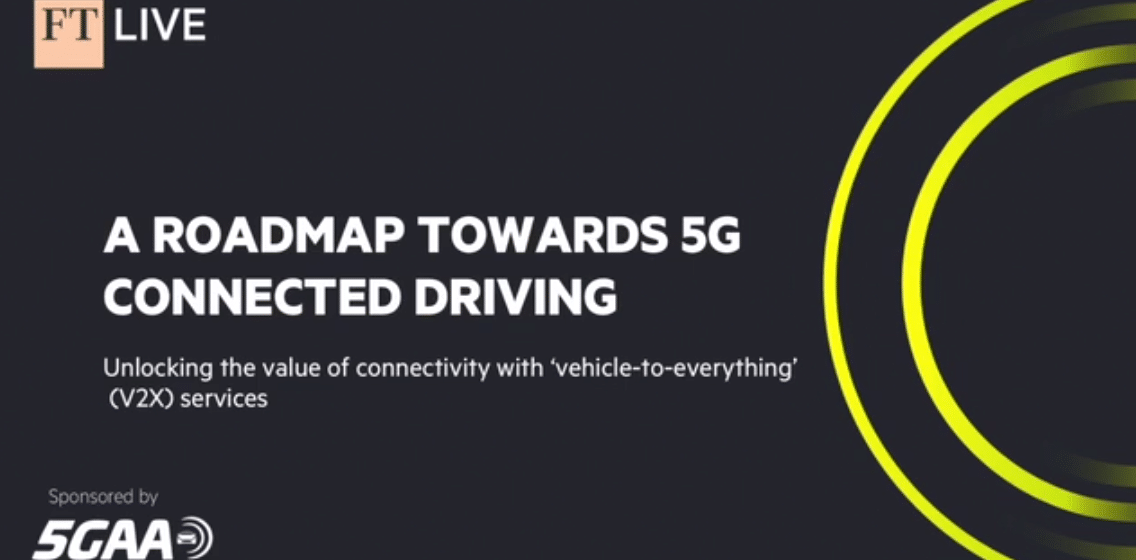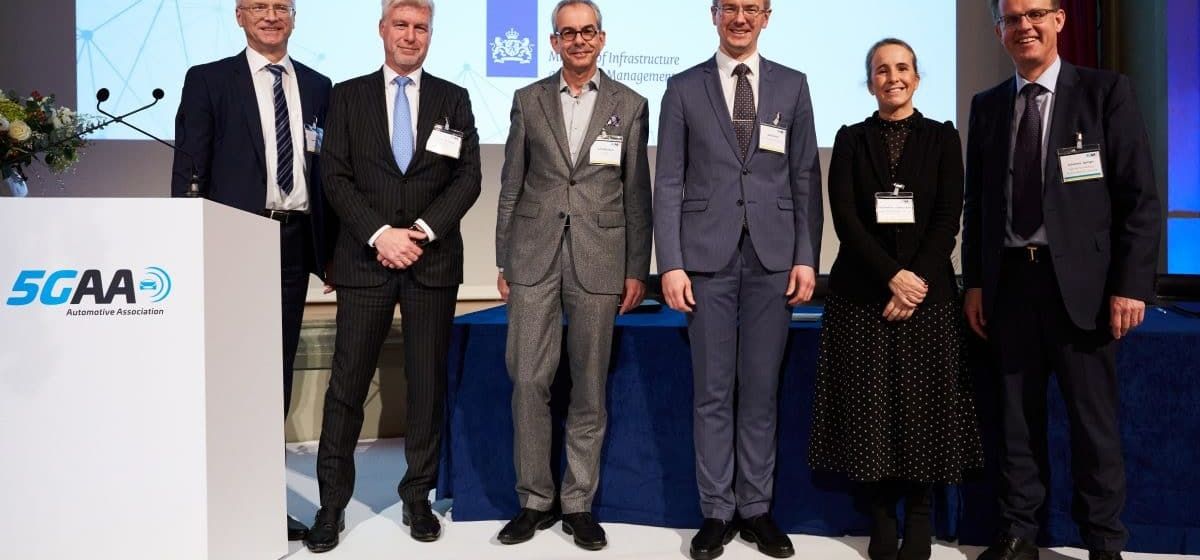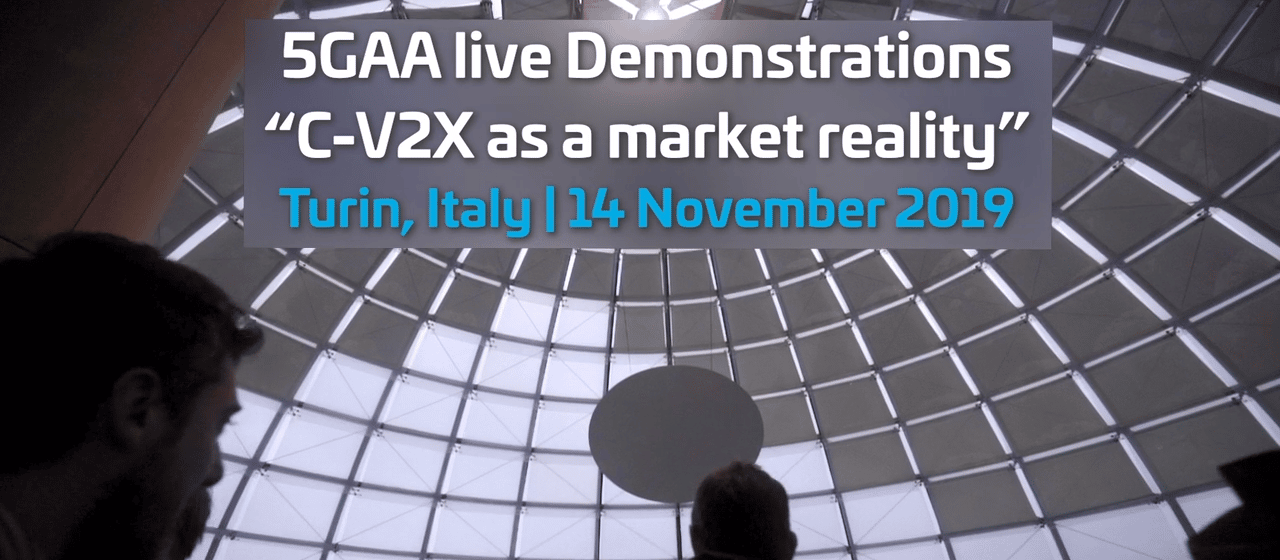
Safety Treatment in V2X Applications
This White Paper describes the new challenges in the treatment of functional safety arising from the introduction of connected and distributed functions, which are typical for cellular vehicle-to-everything (C-V2X) applications. A dedicated 5GAA technical working group performed a detailed analysis to determine, propose, and evaluate possibilities for mobile network operators, vendors, and any further identified stakeholders to provide vehicle original equipment manufacturers (OEMs) what they need to treat safety in new use cases enabled by C-V2X technologies.
Read the full White Paper here.

STiCAD Safety Treatment in Connected and Automated Driving Functions
This STiCAD work item seeks to determine, propose and evaluate possibilities for telecommunication operators, vendors, and any further identified stakeholders to provide what is necessary in order to enable the car OEM to better treat safety for systems that exist beyond a single-vehicle. To achieve this, it was decided to find representative safety requirements for two selected use cases that cover the V2X scenarios of direct communication and network-based information delivery.
Read the full technical report

Reducing EU Transport Emissions: Can C-V2X Deployment play a Significant Role?
On 24 November 2020, the 5G Automotive Association, in partnership with Euractiv, hosted a debate to discuss how C-V2X can contribute to reducing transport emissions.
To what extent can connected driving, with increasing levels of automation, lead to environmental benefits? To answer this question, 5GAA asked Dutch non-profit organisation TNO to conduct a study into the environmental effects of V2X communication as it is currently used in transport and as it can be used in future implementations.
During the event, the organisation presented the results of the study. These highlighted the specific C-V2X functionalities that offer the biggest emission reductions and therefore a contribution to the EU’s climate goals.
Indeed, at the time of the broadcast, the European Commission was working the Sustainable and Smart Mobility strategy, proposing measures that match the ambition of the recently updated emissions reductions goals. Policymakers aimed to leverage digitalisation and automation to create a more sustainable future for the transport and mobility sector.
Watch the video below to have some highlights of the event.

Roadmap to 5G Connected Driving – Financial Times Digital Dialogue sponsored by 5GAA
On 20 October 2020, the 5G Automotive Association took part in one of the Financial Times Digital Dialogues moderated by Michael Pooler, Manufacturing Editor at Financial Times.
A successful and insightful session focused on the “Roadmap towards 5G Connected Driving”.
Oliver Bahns, Senior Vice-President Connected Mobility Deutsche Telecom AG, T-Systems, Digital Solutions; Kelei Shen, CTO Harman; and Stephan Durach, Senior Vice President, Connected Company Development, Technical Operations, BMW Group, highlighted the most critical issues around V2X Services.
Some of the topics covered were:
- What are the most prevalent and common features of connectivity currently available in the field of vehicles-to-everything?
- Why is the automotive sector such an attractive prospect for 5G? Why does full connectivity of cars with everything require 5G as opposed to 4G?
- What are the most exciting emerging technological advances in 5G and V2X?
- What are the technological obstacles and how are they being overcome?
Rewatch the full session below.
Roadmap to 5G Connected Driving – Financial Times Digital Dialogue sponsored by 5GAA
On 20 October 2020, the 5G Automotive Association took part in one of the Financial Times Digital Dialogues moderated by Michael Pooler, Manufacturing Editor at Financial Times.
A successful and insightful session focused on the “Roadmap towards 5G Connected Driving”.
Oliver Bahns, Senior Vice-President Connected Mobility Deutsche Telecom AG, T-Systems, Digital Solutions; Kelei Shen, CTO Harman; and Stephan Durach, Senior Vice President, Connected Company Development, Technical Operations, BMW Group, highlighted the most critical issues around V2X Services.
Some of the topics covered were:
- What are the most prevalent and common features of connectivity currently available in the field of vehicles-to-everything?
- Why is the automotive sector such an attractive prospect for 5G? Why does full connectivity of cars with everything require 5G as opposed to 4G?
- What are the most exciting emerging technological advances in 5G and V2X?
- What are the technological obstacles and how are they being overcome?
Rewatch the full session below.

Environmental Benefits of C-V2X
There is increased interest in the potential environmental benefits of C-V2X, given that substantial transport emissions reductions are required to help mitigate climate change, and the upcoming EC Strategy on Sustainable and Smart Mobility which intends to propose matching measures to the “unprecedented ambition to achieve 90% reduction in emissions by 2050”. The question is to what extent connected driving, with increasing levels of automation, can lead to environmental benefits. 5GAA, the 5G Automotive Association, asked TNO to conduct a study into the environmental effects of V2X communication as it is currently used in transport and as it can be used in future implementations.
Read the full study
Presentation of the study

5GAA Releases New 2030 Roadmap for Advanced Driving Use Cases, Connectivity Technologies and Radio Spectrum Needs
BRUSSELS, 8 September 2020 – In the next two to three years, the 5G Automotive Association’s (5GAA) expects to see mass deployment of vehicle-to-everything (V2X) use cases geared towards improving traffic efficiency and road safety around the world. This vision is outlined in a new White Paper released by 5GAA which explores how leading automakers, mobile
network operators and their suppliers see the world of automotive connectivity evolving over the coming decade.
Vehicles talking to one another but also to roadside and telecom infrastructure and operators – so-called V2X communication – is just the tip of 5GAA’s vision for ‘advanced 5G-connected driving’. In its latest White Paper, 5GAA offers a comprehensive roadmap to guide all parties involved in this near-term market development, bringing both automotive and telecom sectors together to fulfil what 5GAA sees as a powerful digital ecosystem in this fast-moving field.
The Paper highlights selected end-to-end V2X applications factoring in the necessary technological evolution, industry readiness and spectrum needs. 5GAA has developed ‘advanced driving’ use cases such as Cooperative Manoeuvres and Sensor Sharing in conjunction with both the adoption of Cellular Vehicle-To-Everything (C-V2X) standards and the availability of the required technologies and devices. These provide a tangible account of how advanced driving is taking shape globally.
“Success in this endeavour requires to have all industry stakeholders on-board, including telecoms and automotive. Only then will new business opportunities and necessary investments be secured to fuel this ‘ecosystem’,” said 5GAA’s CTO and spokesperson Maxime Flament upon the White Paper’s launch.
With close to 200 million ‘connected vehicles’ already on the roads worldwide in 2020 and a growing number of vehicles with the ability to exchange traffic and road condition information over cellular networks, the foundations for 5G-connected driving are well established, the Paper points out. Further progress in coming years will pivot around 5G-V2X use cases for more efficient and safe driving. From 2025 onwards, 5GAA anticipates mass rollout of more advanced automated driving and safety use cases supported by vehicle connectivity. Additional automated driving functionalities are anticipated as from 2026.
Between now and 2024, ‘connected’ digital road infrastructure will pave the way for real-time or ‘dynamic’ traffic updates, hazard warnings, and high-definition mapping services. Towards 2026, advanced vehicle-to-vehicle (V2V) cooperation will further boost automated driving developments, including sharing sensor data and cooperative manoeuvring.
To fully support this evolution, 5GAA calls on national and regional administrations to make sufficient radio spectrum available for mobile communication networks in targeted low- and mid-bands, and it recommends harmonised use of the 5855-5925 MHz band for communication between road users and roadside infrastructure within the wider international digital traffic ecosystem.
Here, the White Paper acknowledges that some 5G-enabled applications may prove challenging to implement, while others will be easier and offer valuable lessons going forward: “Low-hanging fruit applications addressing OEM fleets, such as automated valet parking and tele-operated driving will open the door to more secure, safe and interoperable vehicle-to-network automotive applications across borders.”
Charting a clear way forward…
All in all, to deliver end-to-end V2X services and unlock the true value of vehicle connectivity, 5GAA considers that the realisation of its roadmap would require:
(1) sufficient spectrum for short-range direct communications at 5.9 GHz
(2) high levels of mobile network coverage along the roads
(3) sufficient service-agnostic mobile network spectrum for mobile network-based communications, in addition to the bands that are currently identified for International Mobile Telecommunications (IMT) use.
The essence and great promise of 5G is that it makes better use of the radio spectrum, boosts mobile network coverage, security and safety, while delivering environmental benefits for citizens and consumers. To chart a clear way forward, 5GAA calls on all players to work together while implementing the use cases highlighted in the Paper, as well as other measures outlined in 5GAA technical reports and papers.
About 5GAA
The 5G Automotive Association (5GAA) is a global, cross-industry organisation of companies and OEMs from the automotive, technology and telecommunications industries working together to develop end-to-end solutions for future mobility and transportation services. 5GAA is uniquely placed to support 5G-V2X advances because it unites all major automotive, chipset, technology, telecom-mobile infrastructure and mobile network operators. In less than three years, more than 135 global players, including pioneering OEMs, have signed up to 5GAA’s vision.
For more information, please contact our media team at marcom@5gaa.org
Download the Roadmap

5GAA officialises five new MoUs during Brussels conference
Is 5G in-car technology ready for automated driving? Are Europe’s roads up to speed for this digital revolution? Are governments, road authorities and industry on the same page? What is Europe’s strategy to secure leadership and capture markets in the field? These and other pressing questions and challenges for connected and automated mobility were addressed on 6 February, at the 5GAA-hosted event – 5G, Igniting the Connected and Automated Mobility Revolution – in Brussels’ Concert Noble. High-level representatives and experts from industry, governments and the EU explored the capabilities, deployment models and vast opportunities of the latest ‘cellular vehicle to everything’ (C-V2X) technology.
BRUSSELS, 6 February 2020 – The 5G Automotive Association (5GAA) organised a conference bringing together EU representatives and the connected automotive ecosystem to the heart of Europe, to officialise its public-private partnerships with several European authorities. Indeed, 5GAA announced extending its partnership network by signing Memoranda of Understanding with the Dutch Ministry of Infrastructure and Water Management, the Italian Ministry of Technological Innovation and Digitalisation, the Spanish Directorate-General of Traffic (DGT), the German Federal Highway Research Institute (BASt) and the Electronic Communication Office of Latvia (VASES). The ambition of the association is to strengthen the collaboration between industry and the public sector and to facilitate the dialogue to drive innovation in mobility and transport with these closer collaborations.
Some recognised speakers at the conference included BMW’s Joachim Göthel, Senior Manager in the German automaker’s ‘Project 5G Alliance’, and Dino Flore who is Vice-president of Technology at Qualcomm, the US chipmaker, as well as Robert MacDougall who heads mobile operator Vodafone Enterprise’s Public Policy Unit. They were joined by senior EU policymakers, including a message from Maria Koleva on behalf of the European Commissioner for Innovation, Research, Culture, Education and Youth Mariya Gabriel and speech by Pearse O’Donohue, Director for Future Networks, Directorate-General for Communications Networks, Content and Technology, as well as national experts from the Netherlands and Spain giving their unique perspective.
“To fulfil its potential in connected and automated mobility, Europe really needs a clear policy message reinforcing its ‘technology neutral’ approach in the future C-ITS regulations,” noted 5GAA’s CTO and spokesperson Maxime Flament.
Automated and connected driving, intelligent driver assistance and data-driven transportation network optimisation are examples of what tomorrow’s transportation will look like for people and governments.
Discussions and conclusions reached at the 5G, Igniting the Connected and Automated Mobility Revolution conference thus paint a rich picture of the work currently underway and the roadblocks and potential detours that may lie ahead. With the help of audience contributions, the event helped to chart the way for future autonomous transport that not only meets the needs of society and industry but can also make a positive contribution to meeting the global Sustainable Development Goals in terms of cleaner and safer transportation.
About 5GAA
The 5G Automotive Association (5GAA) is a global, cross-industry organisation of over 130 members comprised of leading global automakers, Tier-1 suppliers, mobile operators, semiconductor companies and test equipment vendors. It works together to develop end-to-end solutions for future mobility and transport services. 5GAA is committed to helping define and develop the next generation of connected mobility, automated vehicle and intelligent transport solutions based on C-V2X.
Learn more on the 5GAA website and follow us on Twitter and LinkedIn.
Media Contacts
Delia Voica
Tel.: +32 486 69 76 22
Email: delia.voica@5gaa.org
Marketing and Communications Team
Email: marcom@5gaa.org

Turin Demonstrations Wrap-up Video – 14 November 2019
On 14 November 2019, the 5G Automotive Association (5GAA) showcased ready-to-deploy use-cases in the streets of Turin, Italy during a live demo event. A sneak preview of what the future has in store took place on the renowned Lingotto rooftop test track.
Prominent members and partners of the 5GAA including Fiat Chrysler Automobiles, Audi, Continental, Ericsson, Harman Samsung, Marelli, Pirelli, Qualcomm, TIM and Vodafone demonstrated the current state of C-V2X and the road to future, Vehicle-to-Vehicle (V2V), Vehicle-to-Infrastructure (V2I), and Vehicle-to-Network (V2N) applications based on 4G LTE and 5G.
Turin Demonstrations Wrap-up Video – 14 November 2019
On 14 November 2019, the 5G Automotive Association (5GAA) showcased ready-to-deploy use-cases in the streets of Turin, Italy during a live demo event. A sneak preview of what the future has in store took place on the renowned Lingotto rooftop test track.
Prominent members and partners of the 5GAA including Fiat Chrysler Automobiles, Audi, Continental, Ericsson, Harman Samsung, Marelli, Pirelli, Qualcomm, TIM and Vodafone demonstrated the current state of C-V2X and the road to future, Vehicle-to-Vehicle (V2V), Vehicle-to-Infrastructure (V2I), and Vehicle-to-Network (V2N) applications based on 4G LTE and 5G.


